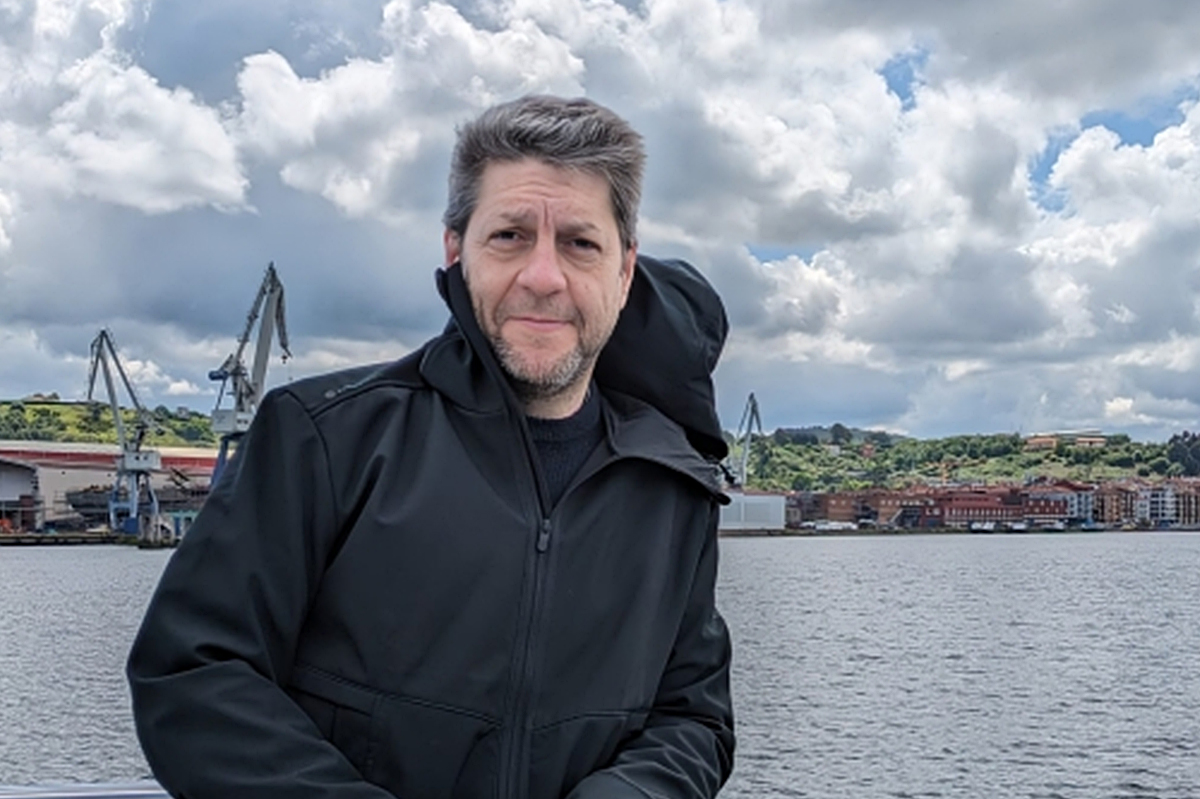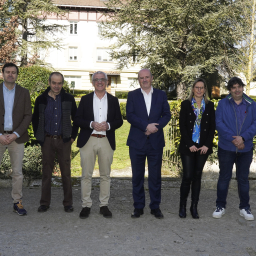NEW
Óscar Del Hierro: “Life Cycle Assessment reconstructs the biography of a product to understand its environmental impact.”
6 June 2025
Developing environmentally friendly production models is one of the major challenges facing the agri-food sector. To achieve this, it is essential to have tools to identify impacts and propose improvements. Life Cycle Assessment (LCA) has become a leading methodology for advancing in this direction. Óscar Del Hierro (researcher) explains the role he plays in numerous projects promoted at NEIKER.
To begin with, how would you define Life Cycle Assessment (LCA) in simple terms?
Life Cycle Assessment, or LCA, is like looking at the complete history of a product, from the time it is born until it is no longer used. That is, from the time the resources are extracted or used to manufacture it, through how it is produced, how it is used and how it is disposed of. It is useful to know what impact that product has on the environment in each of these stages. We could say that it is like reconstructing the “biography” of the product, analyzing what resources it has used, how much energy it has consumed or what emissions it has generated throughout its existence.
Why is this tool important in the field of agri-food research and innovation?
Because it allows us to make more informed decisions. Thanks to LCA, we can identify which agricultural or livestock practices are more polluting, which consume more water or energy, and where there is room for improvement. It is a very useful tool for implementing effective strategies. If we want to produce food more sustainably, we first need to know which part of the process has the most room for improvement. And for that, the LCA is fundamental.
In this full life cycle analysis, what kind of impacts are usually assessed?
The most common are greenhouse gas emissions, which contribute to climate change; water consumption, which determines the amount of water used and in what part of the process; and energy use, especially if it comes from non-renewable sources. Soil and water pollution, which can come from the use of fertilizers or pesticides, and the generation of waste, both solid and liquid, are also analyzed. In short, the idea is to evaluate everything that can negatively affect the planet through the way we produce and consume.
In order to assess all these impacts, how is an LCA study structured?
The process is structured in several phases. The first is to define the objective: to know what we want to analyze and for what purpose. For example, to study the environmental impact of producing a kilo of tomatoes. The second step is to compile a data inventory: this is where we collect all the information on the materials, energy and resources used, as well as the waste or emissions generated. Then comes the impact assessment, which consists of translating this data into concrete environmental impacts, such as emissions or water consumption. And finally, interpretation: in this phase we analyze the results and draw useful conclusions to help us make more sustainable decisions.
Understanding the overall process, how has this methodology been applied at NEIKER?
LCA is already part of NEIKER’s usual work approach and is present in many of our projects. Among them, several projects subsidized by the LIFE call stand out: CarbonFarming, GreenSheep and Crops4LIFE. Each of them is focused on assessing the sustainability of different sectors: beef cattle, sheep (both dairy and beef) and horticulture, respectively. In this context, it is also important to mention the close collaboration we have been consolidating with the Association of Meat Producers (ASOPROVAC) and PROVACUNO, the beef interprofessional.
What role does LCA play in decision making within these research projects?
LCA gives us a solid basis for making data-driven decisions. When researching a new technique, a product or a different way of producing food, this tool allows you to compare options and see which has a lower environmental impact. For example, if you are testing two types of fertilizer, the LCA shows you which one pollutes less. If you are developing new packaging, it helps you see which one uses fewer resources or generates less waste.
In this way, decisions are made not just by intuition, but with a complete analysis of the product’s entire life cycle. In short: LCA acts as a compass that guides research towards more sustainable solutions.
What tools or software are used at NEIKER to perform these analyses?
Depending on the objective of the project, NEIKER uses two different approaches. In some cases, we use standard tools such as the internationally widespread commercial software SimaPro. But in other projects we have chosen to develop our own specific tools, designed to calculate the sustainability of the agricultural and livestock sector in the Basque Country.
This is the case of BehiCarbon, ArdiCarbon and BovidCO2, designed respectively for the dairy, sheep and beef cattle sectors. The latter is currently in the registration process in co-ownership with ASOPROVAC. These tools allow us to carry out analyses that are more in line with local realities and facilitate their use by the sector itself.
What role does NEIKER play in promoting LCA in the agri-food sector?
At NEIKER we play a leading role in the promotion of LCA. On the one hand, we generate the scientific knowledge necessary to advance in its development, standardization and application in the agri-food sector. On the other hand, through research, we improve methodologies, create reliable databases and design specific tools that allow us to rigorously assess the environmental impacts of agri-food products.
We also promote the training of qualified professionals in this area and collaborate with companies, public administrations and other agents to make LCA part of the decision-making process. In short, we help to integrate this vision in the sector and to promote a more sustainable and informed economy.
With these resources, how has LCA contributed to the reduction of environmental impact in the agri-food sector?
The LCA has been a kind of magnifying glass to clearly see which parts of the agri-food process generate the greatest environmental impact. Thanks to it, many people involved in agriculture and livestock farming, as well as companies and research centers, have been able to make better decisions: use less chemical fertilizers, save water, reduce energy consumption or choose more sustainable packaging.
For example, it has been seen that implementing certain improvements in farm management – such as adjusting livestock feed, optimizing fertilizer doses or introducing more efficient irrigation techniques – can have a very significant effect on the environmental footprint. All this has made it possible to move towards more environmentally friendly forms of production, without losing productivity.
And looking ahead, what are the LCA trends that NEIKER is exploring?
In the agri-food sector, future LCA trends are advancing on several fronts. On the one hand, work is being done on more dynamic models, which allow taking into account changes over time, such as crop growth or climate variability, rather than assuming fixed conditions.
Specialized LCA is also being developed, incorporating geographic data (such as geographic information systems, GIS) to better reflect local differences in impacts such as water use or emissions.
Another important line is the integration of LCA into multi-criteria assessments, which combine environmental, social and economic aspects, for example, through social life cycle analysis (S-LCA) and cost analysis (LCC).
In addition, specific environmental footprints, such as water, carbon or biodiversity footprints, which use LCA logic to focus on specific impacts, are being promoted.
Finally, digitalization is another trend to take into account. The use of big data, sensors or blockchain makes it possible to collect field data in real time and build much more accurate and up-to-date life cycle inventories (LCI).
Finally, what key message would be important to convey about the importance of LCA in agri-food research?
If we want to produce food more sustainably, we first need to know where the impacts are the greatest. The LCA gives us that complete vision: it allows us to see the entire path of the products, from the field to the plate, and to detect in which parts of the process we can improve. In short, it is like having a map that guides us towards a more efficient, conscious and planet-friendly form of agriculture.




